[nextpage title=”Introduction”]
Sony Ericsson K800i mobile phone v Canon 350D v Canon 5D Mark II
[published july 2006]
Everyone needs a day off. What better to refresh a palette jaded by the testing of $2000 optical exotica than to put a free camera phone through its paces.


Seriously, though, the 3.2MP Sony Ericsson K800i is a breakthrough gadget that could – indeed, should – impact on the low-end point-and-shoot market like a brick on a greenhouse.
For some time many have questioned the folly of the megapixel wars: boffins lament the lack of attention to dynamic range and adequate flash performance; others highlight the importance of ‘per-pixel sharpness’. My objections have been pragmatic and summable with one question: how big do you need the print?
In response, most pro’s will regale you with a billboard tale; everyone else will point you to an framed A3 on the wall – at best.
Today, the vast majority of captured images never make it to hard copy. I’m not going to get sidetracked into debate over whether or not this is a Tragedy, but I’d lay short odds that somewhere in your house there is a box or drawer stuffed with cherished prints – little, photographic memories. And I’d lay even shorter odds that very few of them are bigger than 7×5 inches.
For amateurs and professionals alike, usage patterns haven’t changed for a century: if you’re serious about the shot, you capture it with the best gear you can use, afford, or carry. But when the purpose of your journey is more than merely taking pictures, you tote the most Convenient Tool. And once in a while, almost accidentally, you capture something special with your Convenient Tool – and you enlarge the print and you put it on the wall and everyone marvels at how great it looks considering you didn’t shoot it with a ‘proper’ camera.
From 2006 onward – specifically, from this phone on – I submit that the mobile phone is at last a credible candidate for the title of Most Convenient Tool for image capture.
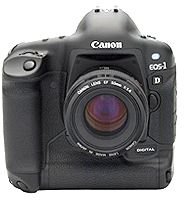 Remember this? In July 2001, the Canon EOS 1D was a hot camera. Every image captured in its beautifully sculpted body measured a giddy 2464 x 1648 pixels. There was a preview screen on the back that crammed 120,000 pixels into two inches so you could see what you’d shot (almost) straight away. And you could change ISO from shot-to-shot – imagine that! At the time, Luminous Landscape was probably quite right to exclaim: “There’s no doubt that the 1D is worth . . . $5,500”.
Remember this? In July 2001, the Canon EOS 1D was a hot camera. Every image captured in its beautifully sculpted body measured a giddy 2464 x 1648 pixels. There was a preview screen on the back that crammed 120,000 pixels into two inches so you could see what you’d shot (almost) straight away. And you could change ISO from shot-to-shot – imagine that! At the time, Luminous Landscape was probably quite right to exclaim: “There’s no doubt that the 1D is worth . . . $5,500”.
 In July 2006, a Sony Ericsson K800i dropped through my letterbox. It shoots images of 2048 x 1365 pixels, and has a 2 inch live preview TFT screen – with 262,000 pixels. It has a 35mm f2.8 prime lens, autofocus, internal storage for 80 images, a Xenon flash and IS (Image Stabilising). And it was free.
In July 2006, a Sony Ericsson K800i dropped through my letterbox. It shoots images of 2048 x 1365 pixels, and has a 2 inch live preview TFT screen – with 262,000 pixels. It has a 35mm f2.8 prime lens, autofocus, internal storage for 80 images, a Xenon flash and IS (Image Stabilising). And it was free.
The fact that it shoots video; presents films; receives FM; marshalls a library of 300 MP3s; plays games; accesses the web; retrieves email; runs Java; vibrates; is a calendar, stopwatch, organiser, alarm clock, calculator, database, jukebox – and phone – is a bonus in something that weighs less than a pancake lens.
At the time of writing (at least until the Nokia N93, with its Zeiss zoom lens, becomes available), this is pretty much the best camera phone money can buy – or, in my case, not: because it was free with my 02 contract. If you really want to know all about it, here’s Sony’s developer white paper.
Up against it in this comparative test are the 8MP Canon 350D with the 18-55mm kit lens, and the 13MP full frame Canon 5D with the excellent Tamron 28-75mm f2.8.
The aim of the game here is to produce the best possible 7×5 inch print from each camera, with corresponding framing and depth of field. In the case of the K800i that meant shooting at f2.8; the grown-ups were at f8. To retain the bigger sensors’ advantage, colour correction and sharpening were performed on the highest resolution captures, then downsampled using Photoshop Bicubic Sharper for maximum quality.
To reiterate: for 90% of all the photographs ever taken, the production of a 7×5″ print is the only meaningful assessment made of a camera’s imaging performance.
This, then, is how they compare . . . .
[nextpage title=”Distortion & Colour”]
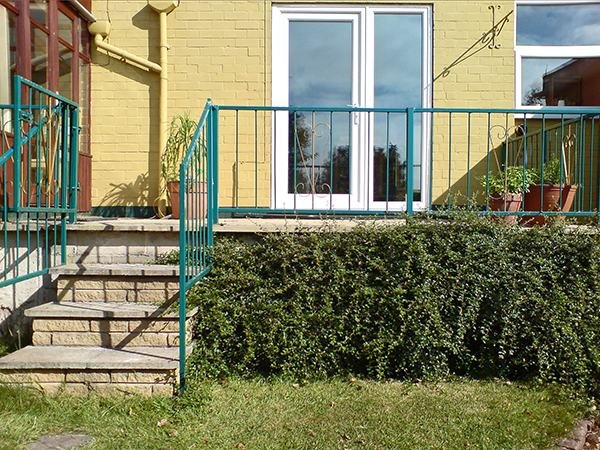 Sony/Ericsson K800i Mobile Camera Phone (Full Frame)
Sony/Ericsson K800i Mobile Camera Phone (Full Frame)
The inbuilt 5.2mm f2.8 lens roughly corresponds to a 35mm wide angle in 35mm, or 24mm or an EF-S mount. Note the well controlled distortion: just a touch of waveform in the corners. It’s not subtle, but it’s a bright and bouncy image. If only the 18-55mm kit lens were as well behaved:
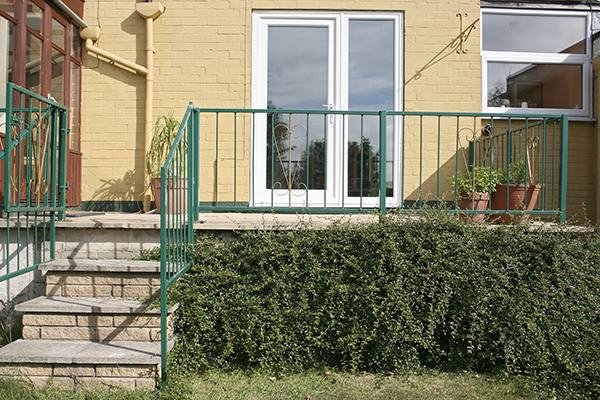
Canon 350D / Canon EF-S 18-55mm at 24mm / f8 (Full Frame)
Barrel distortion clearly evident even in this relatively unrevealing shot, and quite a difference of opinion about colour between the 350D / Rebel’s Fine Quality JPEG and the Sony Ericsson K800i. Let’s go to the benchmark 5D:

Canon 5D / Tamron 28-75mm at 35mm / f8
The Tamron is pretty well corrected at 35mm, with only a hint of waveform distortion visible. The 5D image was captured in RAW and processed through C1 to benefit from benchmark shadow detail extraction and colour accuracy. As you can see, for colour, the phone is closer to the truth than the 350D with the kit lens. Impressive.
Let’s look closer at the histograms . . . .
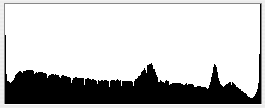
Sony/Ericsson K800i
Note the combing artefacts indicative of actual size PS colour correction. Well controlled highlight clipping here is encouraging, but there are signs that shadow detail extraction is a problem.
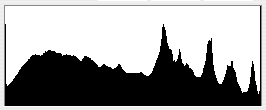
Canon 350D / Canon EF-S 18-55mm
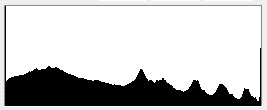
Canon 5D / Tamron 28-75mm
Nice, smooth – though markedly different – histograms. You only get this with untouched captures, RAW processing, or when downsampling from an information-rich source, such as when converting from 16-8 bit or, in this case, bicubic resampling colour corrected images down to 2,048 pixels.
[nextpage title=”Resolution”]
 |
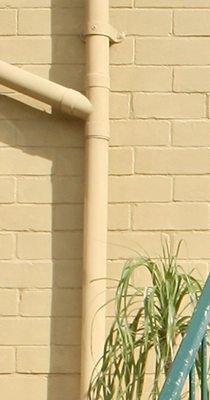 |
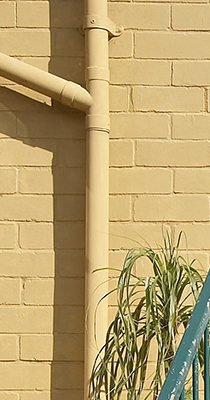 |
| Sony/Ericsson K800i Cybershot Camera Phone 5.2mm/f2.8 |
Canon 350D/18-55mm at 24mm/f8 Downsampled Fine JPEG |
Canon 5D /Tamron 28-75mm f2.8 at 35mm/f8 Downsampled RAW |
 |
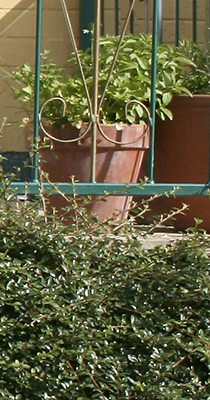 |
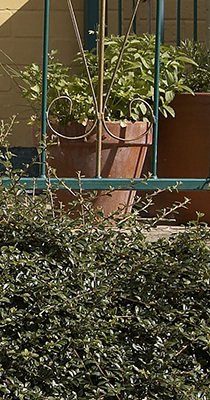 |
| Sony/Ericsson K800i Cybershot Camera Phone 5.2mm/f2.8 |
Canon 350D/18-55mm at 24mm/f8 Downsampled Fine JPEG |
Canon 5D /Tamron 28-75mm f2.8 at 35mm/f8 Downsampled RAW |
 |
 |
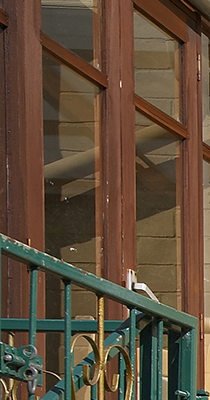 |
| Sony/Ericsson K800i Cybershot Camera Phone 5.2mm/f2.8 |
Canon 350D/18-55mm at 24mm/f8 Downsampled Fine JPEG |
Canon 5D /Tamron 28-75mm f2.8 at 35mm/f8 Downsampled RAW |
[nextpage title=”Conclusion”]
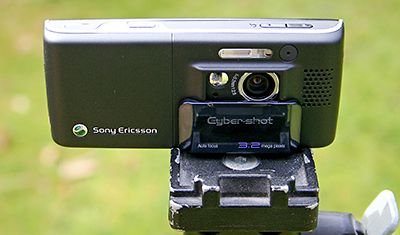
You didn’t expect a 3.2MP camera phone with a fixed optic the size of a contact lens to match a proper camera, did you? But then again, I wasn’t expecting a 7×5 print from such a modest device to be half as good.
Bear in mind that 100% actual pixel crops are much more revealing than a photographic print: in reality the difference between this trio, under these circumstances, is relatively subtle.
The bottom line is that for the first time a camera phone is good enough to suspend disbelief: a 7×5 print contains no critical flaws obvious enough to impair ‘immersion’ in the image.
Clearly the larger the print, the greater the gulf would be, but like I said before: how many A3 prints can your world contain?
It may not have a zoom, it’s low-light abilities may be non-existent, and in a strict analysis it isn’t even quite as good as a 5MP dedicated compact, but one thing is for sure: as long as you’re carrying your phone, you’ll never miss a shot because you left your camera at home; and that’s progress.
Furthermore, I’ve no doubt that when my mobile phone contract expires in 18 months I’ll be given a free 6MP multimeda player camera phone with a zoom lens, tolerable ISO400 performance and space for half my music library onboard. And who will be buying dedicated P+S cameras then?
















